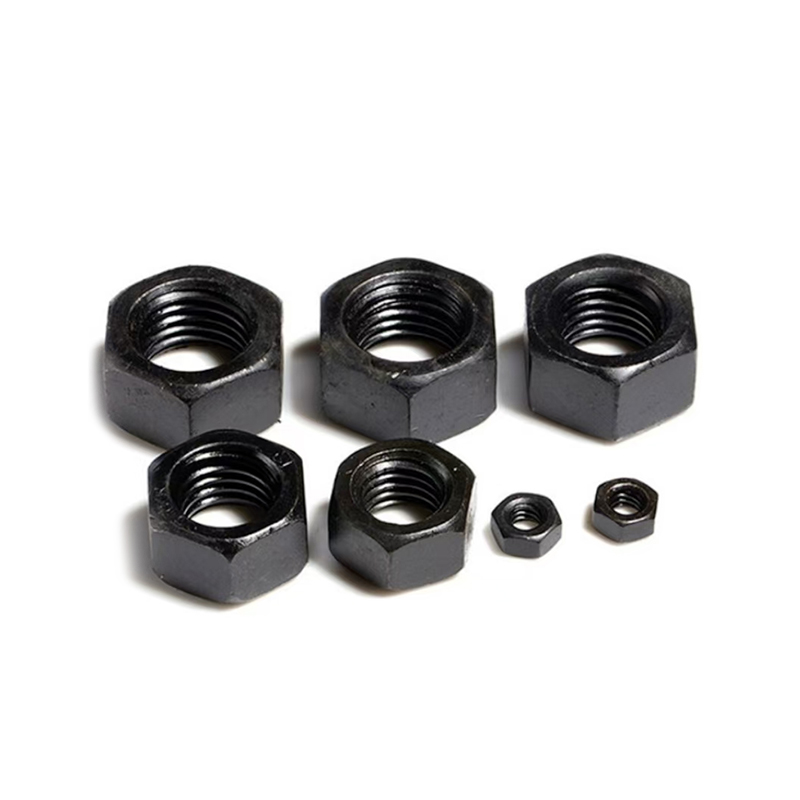The anti-loosening performance of Hexagon Nuts has an important impact, especially under different working conditions such as high vibration, extreme temperature, humidity changes, corrosive media, etc. These factors may cause the connection between the nut and the bolt to loosen, affecting its mechanical stability and tightness.
Vibration and shock are one of the most common causes of nut loosening. When the environment in which the nut and bolt are located is often subjected to vibration or shock, the friction between the threads may not be enough to keep them tight, causing the connection to gradually loosen.
Due to vibration, the nut will gradually move outward along the threads of the bolt and eventually lose its tightness. Vibration environments are common in mechanical equipment, vehicles, aircraft, etc. Hexagon nuts used in vibrating environments usually need to be equipped with anti-loosening devices, such as nylon locking nuts, metal locking nuts or anti-loosening washers. These designs can increase the friction between the threads to better prevent loosening.
Extreme temperature changes or long-term high/low temperatures have a direct impact on the material properties and anti-loosening ability of hexagonal nuts.
In high temperature environments, the strength of the material may decrease, resulting in reduced friction in threaded connections. In addition, the nylon ring in the nylon locking nut will soften or lose elasticity at high temperatures, affecting the locking effect. In low temperature environments, some metal materials will become brittle, causing the nut to break easily. At the same time, the thermal expansion and contraction effect caused by temperature differences may also cause loosening between threads. In extreme temperature environments, locking nuts designed for high or low temperatures, such as all-metal locking nuts, should be used because they can still maintain good anti-loosening performance at high temperatures.
Humid environments and corrosive media (such as salt spray, acid and alkali environments, etc.) will cause surface oxidation or corrosion of metal nuts, which will accelerate thread wear and loosening.

Corrosion will weaken the strength of the thread, resulting in reduced durability of threaded connections. When the friction between the bolt and the nut is reduced, the nut is more likely to loosen. Corrosion problems often occur in marine environments or chemical plants. Using galvanized, stainless steel nuts or hexagonal nuts with surface anti-corrosion treatment (such as galvanizing, nickel plating, chrome plating) in corrosive environments can effectively prevent corrosion. In addition, coatings or anti-corrosion greases can also be used for additional protection.
A humid environment can cause the nut material to absorb moisture due to condensation, further causing rust or corrosion. This is common outdoors, in basements, or other places with high humidity.
Metals are prone to rust in humid environments, resulting in a rough surface of threaded connections, reduced friction, and thus affecting the tightening effect of the nuts. Using waterproof and moisture-proof materials or accessories, or applying anti-rust oil or preservatives during assembly, can help slow down the rust and loosening of threaded connections.
In some special industrial environments, chemicals (such as strong acids, strong bases, solvents, etc.) may react with metal nuts, causing material corrosion or structural damage. This not only weakens the mechanical properties of the nuts, but may also cause serious loosening of the connection.
Nuts in acidic and alkaline environments or exposed to chemicals may corrode quickly, causing the metal surface to become rough or cracked, which in turn accelerates the loosening process. For environments exposed to chemicals, using nuts made of chemically resistant materials (such as stainless steel nuts or Teflon-coated nuts) can effectively improve chemical corrosion resistance.
Nuts may experience material fatigue during long-term use, especially after repeated load changes. Material fatigue causes the nuts to deform and reduce their resistance to loosening.
The fatigue effect of the material will reduce its elasticity and recovery ability, making it impossible for the threaded joint to return to its original state, resulting in loosening. In order to reduce the loosening caused by fatigue, aged or deformed nuts should be checked and replaced regularly, especially when used under high loads or repeated stress.
Selecting the right material and process can effectively extend the service life of the nut and ensure the reliability of the connection.

 English
English 中文简体
中文简体 Español
Español русский
русский عربى
عربى








